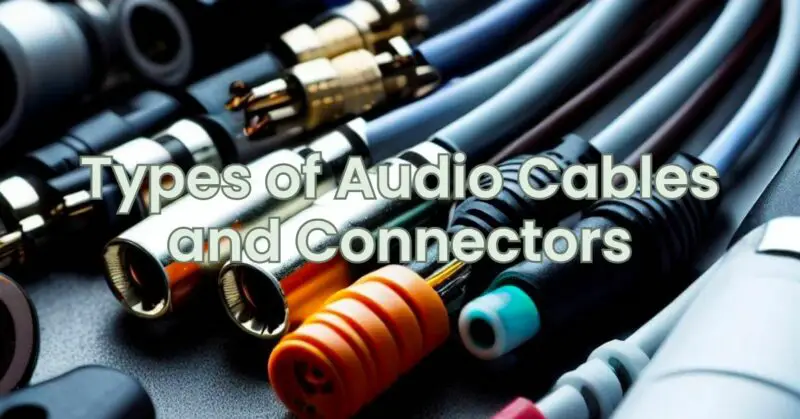When it comes to connecting audio equipment, understanding the different types of cables and connectors available is crucial for achieving optimal sound quality and compatibility. In this comprehensive guide, we’ll explore the various audio cables and connectors commonly used in audio systems, from analog to digital, and help you navigate the world of audio connectivity.
- Analog Audio Cables
Analog audio cables are widely used for transmitting analog audio signals between devices. Here are the most common types:
- RCA Cables: RCA (Radio Corporation of America) cables feature red and white connectors and are typically used for connecting consumer audio devices such as CD players, DVD players, and amplifiers.
- 3.5mm Cables: Also known as mini-jack or headphone cables, these cables have a 3.5mm connector on one end and are commonly used for connecting portable devices like smartphones, tablets, and laptops to speakers or amplifiers.
- XLR Cables: XLR (eXtended Low Resistance) cables are commonly used for professional audio applications. They feature three-pin connectors and are known for their balanced audio transmission, making them suitable for microphones, mixers, and other audio equipment.
- TRS Cables: TRS (Tip, Ring, Sleeve) cables are commonly used for stereo audio connections. They come in various sizes, such as 1/4-inch and 3.5mm, and are commonly used for headphones, musical instruments, and audio interfaces.
- Digital Audio Cables
Digital audio cables transmit digital audio signals, which offer higher fidelity and less susceptibility to interference. Here are the most common types:
- HDMI Cables: HDMI (High-Definition Multimedia Interface) cables are used for transmitting high-definition audio and video signals between devices, such as TVs, Blu-ray players, and game consoles.
- Optical Cables (TOSLINK): Optical cables use fiber-optic technology to transmit digital audio signals in the form of light pulses. They are commonly used for connecting devices like DVD players, soundbars, and game consoles to audio receivers or TVs.
- Coaxial Cables: Coaxial cables transmit digital audio signals through a single copper conductor surrounded by insulation and shielding. They are commonly used for connecting audio devices like CD players and digital audio interfaces to audio receivers or amplifiers.
- Speaker Cables
Speaker cables are used to connect amplifiers or receivers to speakers. They come in various gauges (thicknesses) and configurations. Key types include:
- Banana Plugs: Banana plugs are connectors that fit into the binding posts on speakers and amplifiers. They provide a secure and convenient connection and are often used with high-end audio equipment.
- Spade Connectors: Spade connectors are metal connectors with a fork-like shape that can be attached to the binding posts on speakers and amplifiers. They provide a secure connection and are commonly used in professional audio setups.
- Bare Wire: Bare wire connections involve directly twisting the exposed ends of speaker wire around the binding posts. This method is commonly used in budget or temporary setups.
- MIDI Cables
MIDI (Musical Instrument Digital Interface) cables are used for transmitting musical performance data between electronic instruments and devices. They typically feature five-pin connectors and are used in the music industry for connecting keyboards, synthesizers, and other MIDI-compatible equipment.
It’s important to note that some audio cables can serve multiple purposes depending on the connectors and the devices being connected. For example, a 3.5mm cable with the appropriate adapters can be used as an RCA cable or vice versa.
In conclusion, understanding the different types of audio cables and connectors is vital for ensuring proper connectivity and optimal audio performance. Whether you’re dealing with analog or digital signals, selecting the right cable and connector type based on your specific equipment and application will help you achieve the best possible audio experience.

